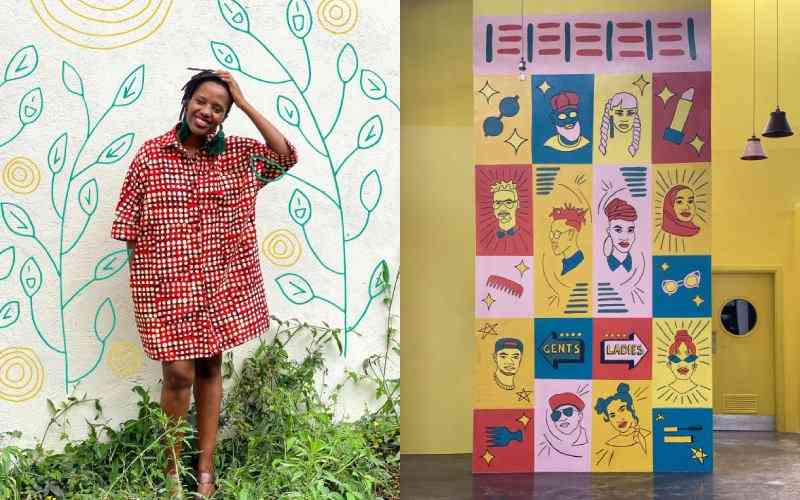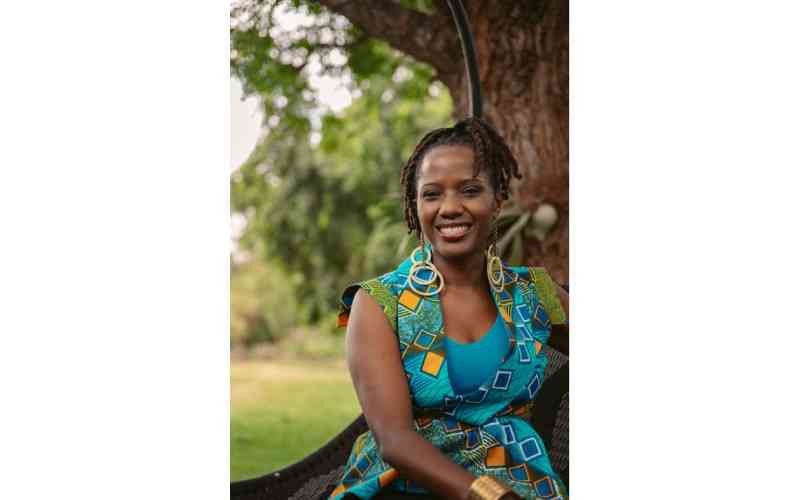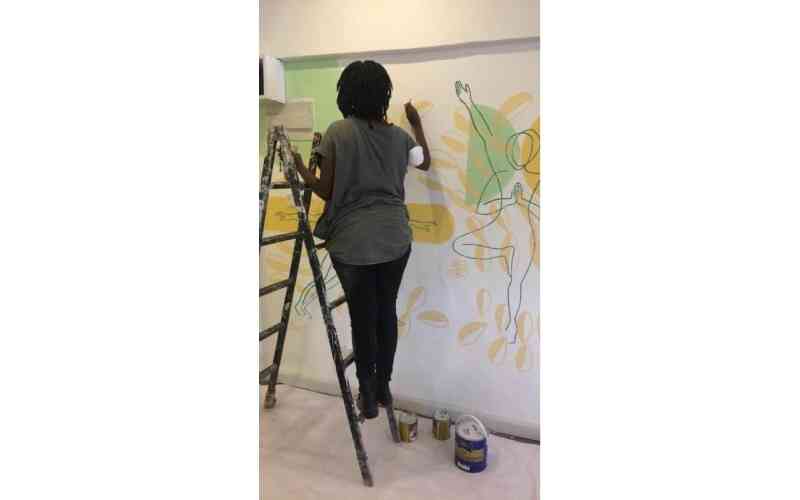
Lulu Kitololo’s infectious laughter reverberates across the lawn outside her Lavington studio. She shares the compound with Pallet Café, an eatery exclusively manned by deaf waiters, from whom she has learned to sign a few words.
Inside her studio lies a collection of aesthetic art: “soulful, hand-drawn illustrations, and hand-lettering pattern with lots of colour.” Her creations include stationery items such as notebooks, gifts, and illustrations. She also fulfills customer requests for wall art and mural painting, all inspired by nature and Africa.
Over some samosas and dawa (hot lemon, honey, and ginger), we talk about her exciting artistic journey that has made her a household name in the world of creatives, both in Kenya and abroad.
“My work is quirky,” she says, gently tapping the table with a large brass ring by Adele Dejak. “It is playful and different with a lot of Swahili culture.”
She was just a toddler when a family friend started to conduct drawing lessons with her, sparking her lifelong love affair with art.
“I was just a child. When my older siblings were in school, I was alone at home, and this friend would help me develop a love for art. I would connect strawberries and make a train. I would cut off the sleeves of my clothes and make patterns, like those clothes for dolls. Of course, my mother was not amused,” she says.
Then there were the quirky experiments in the name of discovery. One day, away from the keen eyes of her parents, Kitololo decided to make a meal of ugali. Ordinarily, ugali is made by mixing boiling water and maize flour. Instead of water, however, Kitololo chose to use drinking soda, Bitter Lemon to be precise.
“It was kind of sweet,” she says. “I would come up with such 'crazy' ideas to try out at home. Again, some were as quirky as they come and that may have reaffirmed my current style of art. Whenever I visited my dad's office, I would make up characters using his typewriter, cut and paste them, and give them to my friends in magazine form. Art was now in my blood,” she says.
In high school, though, art was not her dominant subject. At Hillcrest, her love of math and science overshadowed the arts. A friend even suggested that she pursue architecture, which combined the two subjects.
But Kitololo could not resist the pull art had on her and chose to pursue a four-year study of the subject at Pratt Institute in the US, graduating with a Bachelor of Fine Arts Degree in Communications Design. After school, things did not turn out as perfectly as she expected.
“I stayed in the US for another year and worked in advertising, a job I didn’t like. I felt no connection with clients. I wanted work with some true meaning to me, something I cared about,” she says.
Still in the US, Kitololo worked for a TV channel as an advertising art director in New York before moving to American Express. In these spaces, she met Africans from all over the continent, tasted their food, listened to African music, and formed a desire to discover more about her home continent.
Leaving the US, Kitololo moved to the UK and enrolled for a Master of Arts degree in African Studies at the School of Oriental and African Studies (SOAS), University of London. The school majored not only in government and politics but also in African literature and films.
In the UK, Kitololo spent 12 years, a quarter of the time working for Futerra, a communication agency that focused on sustainable development. Over time, people started reaching out to her for personal projects, and she resigned from her job to concentrate on personal gigs.
In 2010, Kitololo partnered with a tech-savvy fellow and started a creative studio. Four years later, her partner moved to Kenya, and Kitololo started selling her artwork at social events, a move she says helped her know what people really wanted.

At the end of 2016, she too moved to Kenya and registered her company locally. Unlike in the UK, however, cracking the local market was hard, especially figuring out how social events were organized.
“We did not have a clear picture of how my career would look like in Kenya. People had not yet warmed up to art as a career. I could not point to any person who had succeeded exclusively through art. It is a worldwide problem where artists don’t get valued and some feel one should be in more progressive careers such as medicine,” says Kitololo.
With Kenyans' love for online engagements, Kitololo saw that as the means to appeal to her prospective clientele. Small steps led to bigger strides.
“We built a local customer base through social media, especially Instagram. People responded and said they liked our style of art. We were contracted to do murals. Nairobi Street Kitchen came on board. Then Kayana Kenya. Others followed," she says.
Still, the issue of how much a piece of art is worth was a constant. Kenyans, she feels, would rather spend money on consumables rather than on art which has lasting visual appeal. “Some people look at the price and think, ‘oh, it’s too much’. But someone who appreciates good art knows the cost is reasonable. We cannot mass-produce pieces through a computer in order to lower the prices. That will lower our quality as well,” she says.
While she wants to create what she terms “Africa’s most loved creative art brand,” Kitololo has other projects lined up, key among them establishing an arts and culture project in Voi, her hometown, and exposing more young people to art as a career.

“This is a joint project together with my husband. It will be the intersection between creativity, culture, and environment. We want to leverage local culture, indigenous plants, and creativity to create space for events, dining, accommodation, and a botanical garden. We are currently looking for partners such as architects, permaculture experts, and arranging for an international design competition,” she says.
Beyond art, Kitololo is a book lover, currently reading The Covenant of Water by Abraham Verghese. She is also a foodie, though she cannot pick any specific cuisine.
What if she had one day left to live? “I would either spend it on a tropical beach, floating on the ocean and realizing how small I am in comparison to nature. Otherwise, I would spend it in a big city, visiting museums, art galleries, attending live concerts, and of course tasting food from across the world.”